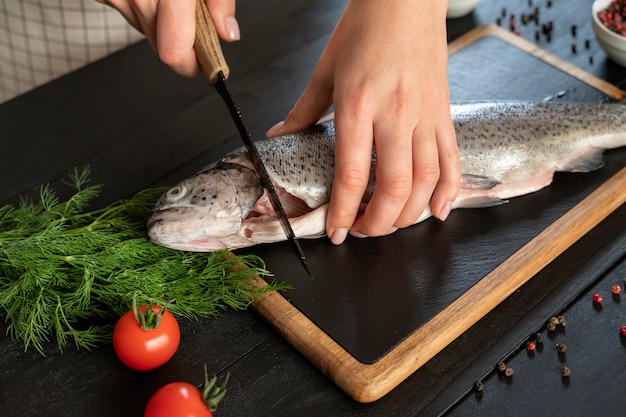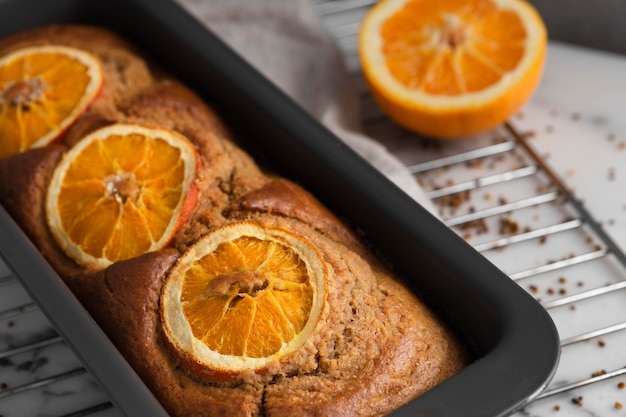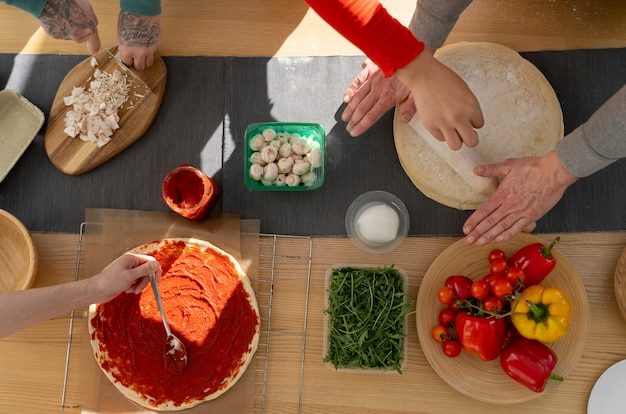Salmon. Just the word conjures up images of juicy, flaky flesh, a hint of lemon, and maybe a side of roasted vegetables. It's a real crowd-pleaser, isn't it? But getting that perfect salmon, cooked just right, can be a bit of a challenge, especially when you're using the oven. I've certainly had my fair share of salmon mishaps – dry, overcooked, or even worse, undercooked. But, as they say, practice makes perfect, and I've finally cracked the code. Let me share my secrets with you.
Part 1: The Science Behind Salmon and Oven Temperature

It's all about understanding the why, isn't it? Why does oven temperature matter so much for salmon?
The Importance of Oven Temperature
Well, imagine a delicate flower. You wouldn't want to bake it at a blazing hot temperature, would you? That's what salmon is like – a delicate fish with a unique texture.
Too low an oven temperature, and it'll take ages to cook through. You risk a dry, flakey mess, not the juicy, tender salmon we all crave. On the other hand, too high a temperature and you'll end up with a crispy exterior but an undercooked, raw centre. Yikes!
Why Salmon Needs a Specific Temperature
Salmon, with its rich omega-3 fatty acids, is a bit of a tricky customer. Those fatty acids are what make it so healthy and delicious, but they also make it prone to overcooking. We need the right temperature to cook it evenly, ensuring the inside reaches that perfect "done" state without burning the outside.
Part 2: The Perfect Oven Temperature for Salmon

So, you've got your beautiful piece of salmon, and you're ready to bake it. But where do you start with the temperature?
The General Rule of Thumb
Most chefs agree that 375°F (190°C) is a good starting point. This temperature allows the salmon to cook through without drying out, creating a lovely balance between a flaky interior and a slightly crisp skin.
Factors That Affect Oven Temperature
But, as with most things in life, it's not always that simple. Here are some factors that can influence the perfect oven temperature:
The size and thickness of the salmon: A thick, chunky piece of salmon will need a lower temperature and longer cooking time. Think of it like a thick steak – it needs to cook gently to ensure the inside is cooked through without burning the outside.
How you're cooking it: Are you cooking the salmon whole, or in individual fillets? Will you be using a marinade or a glaze? These can affect the cooking time and temperature.
Your oven: Every oven is different. Some run a bit hotter, some a bit cooler. So, pay attention to your oven and adjust the temperature accordingly.
Part 3: How to Tell If Your Salmon is Cooked

You've got your salmon in the oven, and anticipation is building. But how do you know when it's ready to be devoured?
The "Flake Test"
This is the classic method, and it's surprisingly accurate. Gently press the thickest part of the salmon with a fork. If it flakes easily, it's done. If it feels firm and resists the fork, it needs a few more minutes in the oven.
Checking the internal temperature
For those who like a bit more precision, a meat thermometer is your best friend. Salmon is considered safe to eat when it reaches an internal temperature of 145°F (63°C).
Don't Overcook It
It's easy to get carried away, but remember that salmon is best when it's cooked just until it flakes apart, but still retains its moisture. Overcook it, and you'll end up with a dry, crumbly mess.
Part 4: Tips for Perfect Oven-baked salmon
Here are some tips and tricks to help you achieve salmon perfection.
1. The Right Salmon
Start with good quality salmon. Fresh, skin-on fillets are ideal. If you're using frozen salmon, be sure to thaw it completely before cooking.
2. Don't Overcrowd the Pan
Give your salmon some breathing room! Overcrowding the pan will prevent it from cooking evenly, and you'll likely end up with some parts undercooked and others overcooked.
3. Keep an Eye on It
Even with the perfect oven temperature, it's important to check on your salmon regularly. This way, you can ensure it's cooking evenly and not drying out.
4. Rest the Salmon
Once the salmon is cooked, resist the urge to dig in right away! Allow it to rest for a few minutes. This will help the juices redistribute throughout the flesh, making it juicier and more flavorful.
Part 5: salmon recipes: Delicious and Easy
Here are a few of my go-to recipes for oven-baked salmon, perfect for any occasion.
1. Lemon and Dill Salmon
This is a timeless classic, simple yet incredibly satisfying.
Ingredients:
1 lb. salmon fillets
2 tbsp. lemon juice
1 tbsp. chopped fresh dill
Salt and pepper
Instructions:
Preheat your oven to 375°F (190°C).
Place the salmon fillets in a baking dish.
Combine the lemon juice, dill, salt, and pepper.
Pour the mixture over the salmon.
Bake for 15-20 minutes, or until the salmon is cooked through.
2. Honey Garlic Salmon
This recipe offers a delightful balance of sweet and savory, making it a crowd-pleaser.
Ingredients:
1 lb. salmon fillets
1 tbsp. honey
1 tbsp. soy sauce
1 clove garlic, minced
Instructions:
Preheat your oven to 375°F (190°C).
Place the salmon fillets in a baking dish.
Combine the honey, soy sauce, and garlic.
Pour the mixture over the salmon.
Bake for 15-20 minutes, or until the salmon is cooked through.
3. Roasted Salmon with Vegetables
This is a one-pan wonder, a complete meal that's both delicious and healthy.
Ingredients:
1 lb. salmon fillets
1 cup broccoli florets
1 cup Brussels sprouts, halved
1/4 cup olive oil
Salt and pepper
Instructions:
Preheat your oven to 400°F (200°C).
Place the salmon fillets and vegetables on a baking sheet.
Drizzle with olive oil and season with salt and pepper.
Bake for 20-25 minutes, or until the salmon is cooked through and the vegetables are tender.
Part 6: Troubleshooting Oven-Baked Salmon
We all have those moments – the salmon looks perfect going into the oven, and then something goes wrong. Don't worry, we've all been there.
Dry Salmon
No one wants dry salmon. Here's how to combat it:
Lower the oven temperature: If you're baking at a high temperature, try lowering it by 25°F (10°C) and baking for a little longer.
Add moisture: Adding a little liquid to the pan, like broth or wine, can help retain moisture.
Use a foil tent: Cover the salmon with a piece of foil for the first part of the cooking time to trap in moisture.
Undercooked Salmon
You've got a salmon that's still a little pink in the middle – not to worry, you can still save it!
Return to the oven: Pop it back in the oven for a few more minutes, checking regularly to prevent overcooking.
Use a skillet: Finish cooking the salmon in a skillet over medium heat.
overcooked salmon
Oh, the dreaded overcooked salmon! It's not as tender as we'd like, but don't despair!
Embrace it: You can still enjoy it, just not as tender. Add it to salads, sandwiches, or even pasta dishes.
Add a sauce: A flavorful sauce can help disguise the dryness and make it more appealing.
Part 7: The Importance of Resting
It's tempting to dive right in, but hold your horses!
Why Resting is Crucial
Resting your salmon for a few minutes allows the juices to redistribute throughout the flesh, making it juicier and more flavorful.
How Long to Rest
Ideally, rest the salmon for 5-10 minutes before serving. You can cover it with foil to keep it warm while it rests.
Part 8: Serving Up Your Salmon
Now, the fun part! Time to enjoy your beautifully cooked salmon.
Creative Serving Ideas
There are endless possibilities for serving up your oven-baked salmon:
Serve it over rice or quinoa: A classic and satisfying combination.
Top it with a salad: Add some fresh greens and vegetables for a healthy and vibrant meal.
Make a sandwich: Salmon is a delicious filling for sandwiches, especially with a dollop of cream cheese or avocado.
Add it to pasta: Combine cooked salmon with your favorite pasta sauce for a quick and easy dinner.
Create a salmon platter: Serve with roasted vegetables, crusty bread, and aioli for a delicious and elegant meal.
Part 9: FAQs
Let's address some common questions you might have about oven-baked salmon.
1. Can I bake salmon skin-on or skin-off?
Absolutely! Both methods have their pros and cons:
Skin-on: The skin helps protect the flesh from drying out and adds a crispy texture.
Skin-off: The salmon will cook more evenly, but it might dry out a little faster.
2. Can I bake salmon from frozen?
I wouldn't recommend it. It's best to thaw the salmon completely before cooking.
3. What kind of pan should I use for baking salmon?
A baking sheet or a casserole dish will work perfectly.
4. How can I make sure my salmon isn't dry?
Use the right oven temperature.
Don't overcook it.
Rest the salmon after cooking.
Add a little moisture to the pan.
5. What are some good sides to serve with salmon?
Roasted vegetables
Rice or quinoa
Salad
Asparagus
sweet potato fries
Part 10: Final Thoughts
There you have it, a comprehensive guide to baking salmon in the oven. Armed with this knowledge, you'll be a salmon-baking pro in no time.
Remember, practice makes perfect! Don't be afraid to experiment, try different recipes, and find what works best for you. And above all, enjoy the process!
Happy baking!
Everyone is watching

Corn on the Cob: The Ultimate Guide to Perfectly Cooked Ears
Healthy MealsAh, corn on the cob. Just the name evokes images of sunny days, barbecues, and that sweet, juicy flavour that ...

Perfect Pork Roast Oven Cooking Time: A Guide to Delicious Results
Healthy MealsThere's something truly satisfying about a perfectly roasted pork. The aroma alone is enough to make your mout...

Ham Cooking Time: How Long to Bake, Smoke, or Boil a Delicious Ham
Healthy MealsAh, ham. It's a classic, isn't it? A real crowd-pleaser, especially around holidays. And when done right, it'...

Scallops: The Ultimate Guide to Perfect Cooking
Healthy MealsAh, scallops. Those delicate, sweet, and utterly delicious morsels of the sea. They hold a special place in my...

Spaghetti Squash: The Ultimate Guide to Cooking and Serving
Healthy MealsRemember that time you saw spaghetti squash at the supermarket, looking all bumpy and strange, and thought, "W...
